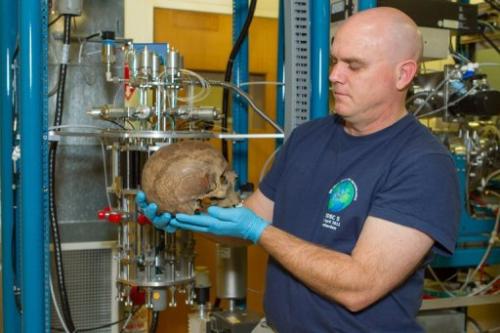Turning Back the Years in Oz July 3, 2013
Author: Beach Combing | in : Medieval, Modern , trackback***With thanks to Invisible and Wade***
Consider a curious thing. Australian prehistory is far easier to rewrite than American prehistory. If you begin to question the route by which the Aborigines arrived in Australia, or posit an early Indian influx onto the continent or even begin to speculate about mahogany boats and seventeenth-century Caucasoid skulls then an Australian archaeologists will invite you in for a cup of tea and a chat. If you begin to speculate about pre-Clovis arrivals in America or, God forbid, trans-Atlantic trips before Columbus in the sitting room of an American archaeologist the chances are you will pushed through the porch window and then kicked down the stairs before being set upon by the rottweillers – archaeologists habitually keep them in their back yards. For Australian archaeologist the whole thing is an open if slightly tiresome question. For American archaeologists the matter is totemic and tribal. (Though it has to be said that American archaeologists are MUCH provoked: Welsh princes in California etc etc)
Beach just wants to flag up two recent pieces of evidence for possible pre-Dutch expeditions to that brown breast of the New World down under. First, the skull… In 2011 a murder victim’s skull was found in New South Wales, only, of course, it wasn’t a murder victim, or at least not a recent one. When the police had put up the crime scene tape the boffins stepped in and announced that it was actually the skull of a white male (not associated with any body) who probably died between 1660 and 1700. Now that is exciting because James Cook got to the eastern seaboard about 1770. Three possible explanations. First, this could be a Dutch skull: the Dutch reached the north and west of Australia in the early seventeenth century. Still that would be very exciting as this would prove that they got thousand of miles further than anyone has previously thought. Second, this could be a seventeenth-century skull that was brought to Australia by an early collector and that was then lost: it happens. Third, the dating could be off. In fact, the dating for 1660 to 1700 was with ‘80 percent probability’. For the naturally conservative like Beach that third category looks particularly alluring: apologies to The Hague.
Another important find, which we will cover in far more detail in a few months, is a twentieth-century coin find. Briefly, some tenth-century African coins were found in WW2 on the northern Wessel Islands. There are all kinds of problems with this discovery. If it is a fake it is audacious. If it is a genuine find it is epoch-changing.
Other plot devices for early visits to Australia: drbeachcombing AT yahoo DOT com. Note we’ve covered Portuguese maps in another post.



